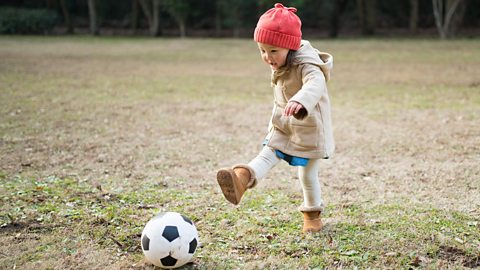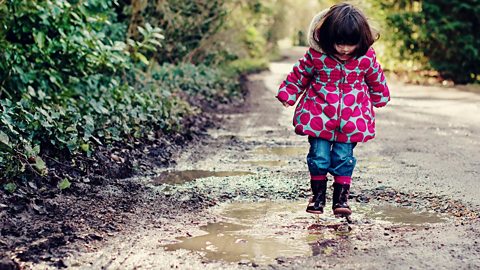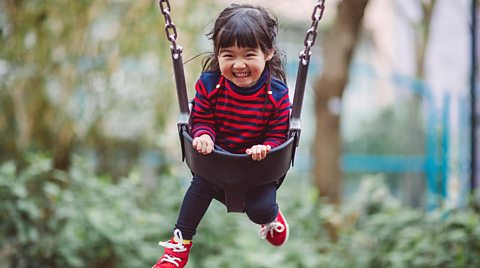Learning to ride a bike can be a major milestone in your little one’s life and has benefits for their confidence as well as their physical wellbeing.
“It’s a rite of passage for all children and it’s their first opportunity to experience freedom and independence,” says Emily Cherry, Chief Executive of the , the government's national cycle training programme for children and families.
There isn't a one-size-fits-all answer to when your child is ready to learn, although it’s often from the age of three upwards. “They need coordination and control skills to start learning, but these can be taught. The essential thing you’re looking for is enthusiasm,” Emily explains.
Here are some top tips to help you support your little one as they start their cycling journey…
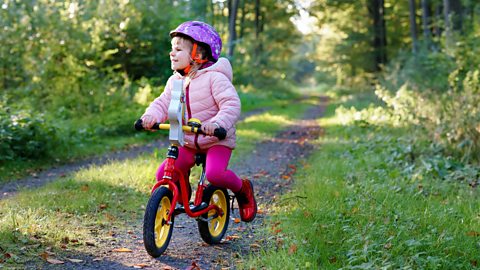
1. Choose the right kit
Your first bike probably came with stabilisers but balance bikes - in other words, bikes with no pedals - are now recommended by many organisations, including Bikeability.
“Stabilisers are designed to wobble and get a child used to balancing, but they actually give a false sense of balance,” explains Emily. “If you start with a balance bike, your child will learn essential control skills.”
“You can buy a balance bike or convert a regular bike by removing the pedals. If you go for a balance bike, get one with brakes so your child builds their confidence with them from an early age,” says Emily.
“If your child has coordination difficulties or special educational needs and disabilities, a three-wheel trike can be beneficial.”
If cost’s a concern, think about buying a second-hand bike, but make sure it’s good quality. And whether it’s new or preloved, it needs to be the right size for your child and set up correctly for their height.
“Get a correctly fitted helmet too. You can also buy this second hand but check it has a quality mark logo and no dents or scratches,” adds Emily. “You don’t need knee or elbow pads, but do select your child’s clothes and shoes carefully. Look out for dangly bits – avoid shoelaces, wide trousers, long skirts, basically anything that could get caught in their bike.”
2. Pick a safe place to learn
Pick a safe, quiet area with a smooth surface or short grass well away from traffic.
“If you’re lucky enough to have a garden or drive they can be ideal, but parks are great too,” says Emily. “You can move on to slopes later but to begin with, go for somewhere nice and flat.”
Choose a good time too. The weather should be fine and dry, and you should have enough time to ensure you and your child don’t feel rushed.
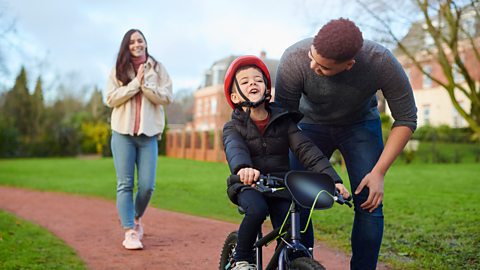
3. Help them feel comfortable on their bike
To help your little one feel relaxed, talk them through the different parts of the bike.
Use simple, understandable language. “Show them where they're going to put their hands and where they're going to sit,” says Emily. Get them to practise getting on and off the bike as an easy starting exercise.
4. Split their learning into smaller stages
Your focus should be to develop your child’s sense of balance, so first get them used to stepping and gliding.
“Games can help, and we often use animal-based ones,” says Emily. “To start off, tell your child to sit on their bike and move forward using tiny little mouse steps. Keep repeating until they feel confident to step like a bigger animal, such as a dog and build up speed. Show them how to use their brakes from the outset.
“Once they’ve got the hang of this, encourage them to glide. Tell them to think about being a bunny or frog, lift their legs up and do a big jump. When they’re gliding, they’ve basically mastered the art of balance.
“And once they can glide comfortably for one or two metres and they’ve got the balance, know how to control their bike, and can go in a straight line, then you can think about introducing pedals. But when you do, make sure they look ahead and not down to their feet.”
5. Think about where you stand
Choosing the right place can boost their natural feel for riding and their confidence.
“Rather than standing behind them, walk alongside them or stay in front so they keep looking ahead. Take another adult along, if possible, for extra encouragement and one of you could go at the front and the other could stay with your child as they push off,” says Emily.
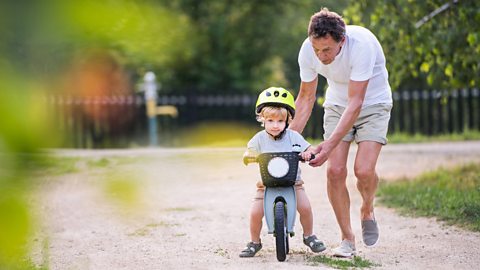
6. Stay positive
Keep things fun and upbeat, and go at your child’s pace. Take a break if either of you becomes tired, bored or tetchy. The last thing you want is for them to dread getting on a bike.
If your little one is nervous about falling off, try some simple exercises to show them how much control they have over the bike, says Emily.
“For example, you could stand in front of them, hold on to the handlebars and get them to take their feet completely off the floor with their bottom still in the saddle and hands on the handlebars. Then move their bike from side to side. Most children will naturally put their feet down and you can say ‘Well done, you can control it! You knew how to do it without me telling you.’”
7. Be a role model
Your child might grasp the basics quickly, but to reach their potential, they’ll need to build experience and develop observation and communication skills.
Children learn by copying others, so be a role model for them and brush up on your own cycling skills if they’re a little rusty.
“The best thing you can do is show your child that it’s possible to go anywhere on a bike as long as you've got the right skills,” says Emily.

